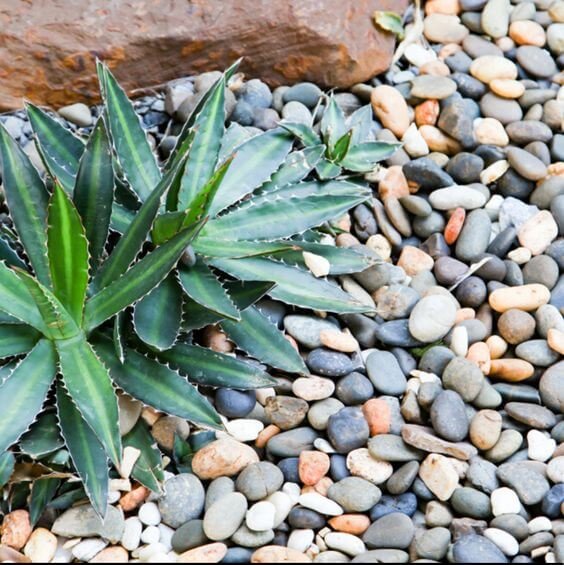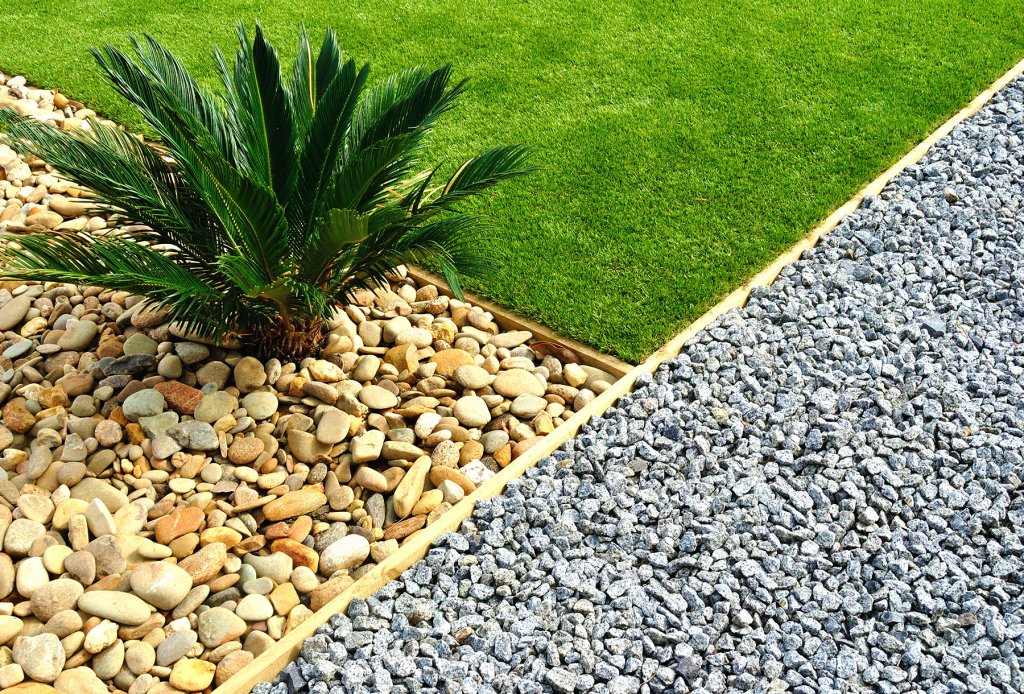Controlling weeds in outdoor areas is a problem that many homeowners and landscape enthusiasts face, particularly in the front yard. In addition to removing your environment’s visual appeal, weeds compete with the plants you want to use for vital nutrients and resources.
Many people use rock landscaping in their front yards as an efficient weed prevention method to tackle this recurring issue. However, which kind of rock is ideal for this use, and how can you choose wisely?
This article will discuss several types of rocks and offer advice on choosing the best one to keep weeds out of a front yard rock landscaping idea with a low-maintenance, aesthetically beautiful outdoor area.
Ways to Prevent Weeds in Landscaping

1. Gravel: Dependable and Adaptable
One common option for preventing weeds in landscaping is gravel. Because of its flexible structure, weeds find it difficult to take root and develop. Pea gravel and crushed gravel are also great choices since they offer a level surface that prevents the growth of weeds. In addition to being efficient, gravel may be used in various landscape designs, ranging from formal to rustic.
2. River Rock: A Natural Gem with Practical Uses
Not only are river rocks visually beautiful, but they also work well as a weed barrier. These round, smooth stones give your landscape design a natural, organic touch while acting as a barrier to prevent weed development. Because river rocks are available in various shapes and hues, you can personalize how your outdoor area looks.
3. Lava Rocks: Durable and Lightweight
Lava rock is yet another fantastic option for controlling weeds. Its porous surface prevents weeds from taking root, and its lightweight nature makes it easy to work with. Because lava rock is long-lasting, your landscaping efforts will be successful for a considerable amount of time.
4. Choosing Flagstone or Pavers: Blending Style and Utility
Pavers or flagstones, though not exactly rocks in the conventional sense, can be placed carefully to inhibit the growth of weeds. Tightly putting these level stones together produces a weed-blocking barrier. This alternative works particularly well for patio areas and paths where both weed control and a more refined look are sought.
5. Combining Mulch and Rock to Maximise Weed Control
Mulch and rocks combined provide a complete weed control strategy. Start by covering the soil with a layer of weed barrier cloth, then cover it with a layer of mulch. Place the rocks of your choice on top of the mulch. This mixture helps to keep moisture in the soil, effectively keeping weeds out of your landscaping, and improves its aesthetic appeal.
6. Pulverized Stone: An Organic Weed Deterrent
A front yard’s landscaping is a crucial component of curb appeal, and people are always looking for methods to make their yards seem welcoming and free of weeds. This section will discuss the advantages of using crushed stone in front yard rock landscaping as a natural of the outside of your house. The jagged fragments that make up crushed stone produce an uneven surface that effectively inhibits the growth of weeds. Because of this feature, it’s a great option for front yard landscaping, where weed control and aesthetics are crucial.
Conclusion
The size of your outdoor space, your weed control requirements, and your aesthetic choices all play a role in choosing the best rock for landscaping weed prevention.
Any of the following options- gravel, river rock, lava rock, flagstone, mulch, and rocks, or crushed stone – offer a practical way to suppress weed growth while boosting the aesthetic appeal of your landscape.
Through comprehension of these rock selection qualities and their role in preventing weed growth, you may establish a low-maintenance, weed-free outdoor haven that you can enjoy for many years to come.
Frequently Asked Questions
Are Rocks an Environmentally Friendly Solution, and How Do They Stop Weeds from Growing in Landscaping?
Through the creation of a physical barrier that obstructs weed growth, rocks prevent weeds. They construct sunlight, which hinders the ability of weed seeds to take root. Rocks are useful; however, how environmentally friendly they are depends on where and what kind of rock it is. Sustainable options are rocks that are sourced locally and have little effect on the environment.
What Are the Advantages of Putting a Weed Barrier Cloth Beneath Rocks, and Is It Necessary?
Although optional, placing weed barrier cloth beneath rock has many advantages. By further obstructing sunlight and preventing weed roots from soaking into the soil, it provides an additional layer of weed suppression. It also keeps rocks from gradually sinking into the earth and helps them stay in their current positions.
Are There Any Particular Maintenance Activities Involved?
Even while rock-based landscaping needs less upkeep than traditional gardens, weeds may occasionally need to be pulled. To stop weeds from taking root, pull them as soon as they appear. Herbicides and weed-killing sprays can also be used sparingly, but use caution to protect desirable plants.
Can Rocks Become Overheated in Direct Sunshine, Which Could Harm Plants or Change the Soil Temperature?
In direct sunshine, rocks can get very hot, which can have an impact on the surrounding plants and soil temperature. Selecting lighter-colored rocks that absorb less heat will help alleviate this. You should also consider applying organic mulch around plants to help control soil moisture and temperature.
Be sure to check out these other posts for more insights and information relevant to your content:

